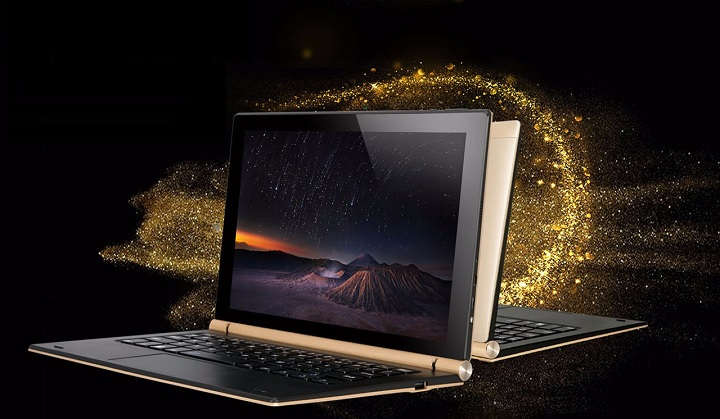
Boot the computer from a USB It is something that can be great when the PC does not work correctly or we want to install a new operating system. In this way we can run diagnostic tools, a good antivirus or directly install a new operating system on the computer. It is not very complicated, but as in everything in life, you have to know how to do it correctly. Below we explain all the steps to follow.
First of all, you need a bootable USB
We must bear in mind, of course, that for the computer to load from an external USB drive it is necessary that the pendrive or USB memory be self-bootable. It is not worth just copying the antivirus on the pendrive or making a copy-paste with the Windows or Linux installation files.
For this we will need an application like Rufus, burn an ISO with Hiren’s Boot on the USB or use the corresponding bootable installation package. If you see that the BIOS of your PC does not execute anything when loading from USB there is a high degree of probability that the external USB drive we are using is not bootable or bootable.
How to boot the PC from a USB
Now, if we already have an automatic boot USB, we just have to follow these steps:
- Enter the BIOS / UEFI of our computer.
- Change the first boot drive to USB.
- Restart the system.
In any case, we must bear in mind that these steps are only compatible with desktop PCs and laptops, leaving completely out any type of Mac computer or device manufactured by Apple.
1- Enter the BIOS / UEFI
To be able to enter the BIOS it is necessary to perform a certain keystroke.
- Turn off the computer and turn it on again, or restart it directly.
- Before the Windows or Linux loading screen appears (that is, as soon as the PC restarts after a couple of seconds), press the F2, Delete, ESC, F8, F9 or F10 key. The key to press may vary depending on the make and model of the computer. If none of these keys work for you, do an Internet search to find out which is the BIOS access key for your specific PC.
- If we have pressed the correct key, the system will enter the BIOS or UEFI, a black or blue screen, without windows and manageable only from the keyboard (without mouse).
2- Check if the firmware of your board is BIOS or UEFI
The next step is to know if our PC works with BIOS or, on the contrary, uses the UEFI system. This is an important piece of information, as it will determine the method of changing the boot system and loading it from USB.
- Once inside the BIOS / UEFI use the keyboard to go to the menu "Boot"Or"start”.
- Locate the “Legacy boot”(Legacy Boot) or“Safe Start”(Secure Boot).
- If Legacy Boot is enabled, that means we are using a BIOS. On the contrary, if it is disabled, it means that we are using UEFI.
- If Secure Boot is enabled, that means we are using a UEFI. On the contrary, if it is disabled, it means that we are inside the BIOS.


In the case of not seeing the Legacy Boot or Secure Boot options, we can also differentiate both systems according to its interface and visual aspect. Normally we will see in the upper area of the screen if we are in the BIOS or in UEFI. In addition, the UEFI interface has a more current appearance, with various colors, while the BIOS is usually only blue and white.
3- Change the boot order in the BIOS
Now that we know what the firmware of our PC is, if we are working with a BIOS, we will do the following.
- Turn on the computer and enter the BIOS (see previous steps).
- Go to the tab of "start"Or"Boot”.
- Locate the section "Boot priority”, “Boot device priority”, “Boot order”, “Boot order”Or similar and hit enter.
- Use the directional arrows to select the USB disk or USB drive as the primary boot method.
- Save the changes and exit the BIOS.
- Connect the USB drive to your computer and restart your computer again. The PC will automatically load from the pendrive or USB drive that we just connected.

Note: In some BIOS we will not see directly the option to choose the USB device. In these cases, we will first have to enter “Boot -> Hard disk drives”And select the USB drive as the primary hard drive, and then select the selected hard drive as the primary boot.


4- Change the boot order in UEFI
For systems with a UEFI interface, the process is slightly different.
- Turn off your computer and plug in the bootable USB you want to use.
- Turn on the computer and look closely at the boot screen. You will see a legend with the different keys that you can press. One of them will say something like “Boot options" or "Boot options”. Press that key.
- This will take us to a new screen where we will see the various boot options available.
- Select the USB drive that you just connected to your computer. The system will automatically load from said pendrive or USB memory.
Although they have been on the market for many years, UEFI systems are still not as popular as the classic BIOS. Many people are still not clear about which of the two they are using, and although they are very similar for the average user, they certainly have their nuances when it comes to loading priorities. If we work with UEFI, by default the system will always load from the hard drive or SSD unless we change the order as soon as the PC starts up. In the case of the BIOS, the boot will always follow a set order regardless of whether the boot drive (in this case the USB) is connected or not. Once we know which of the 2 we are using, the process is really easy to carry out.
You have Telegram installed? Receive the best post of each day on our channel. Or if you prefer, find out everything from our Facebook page.
